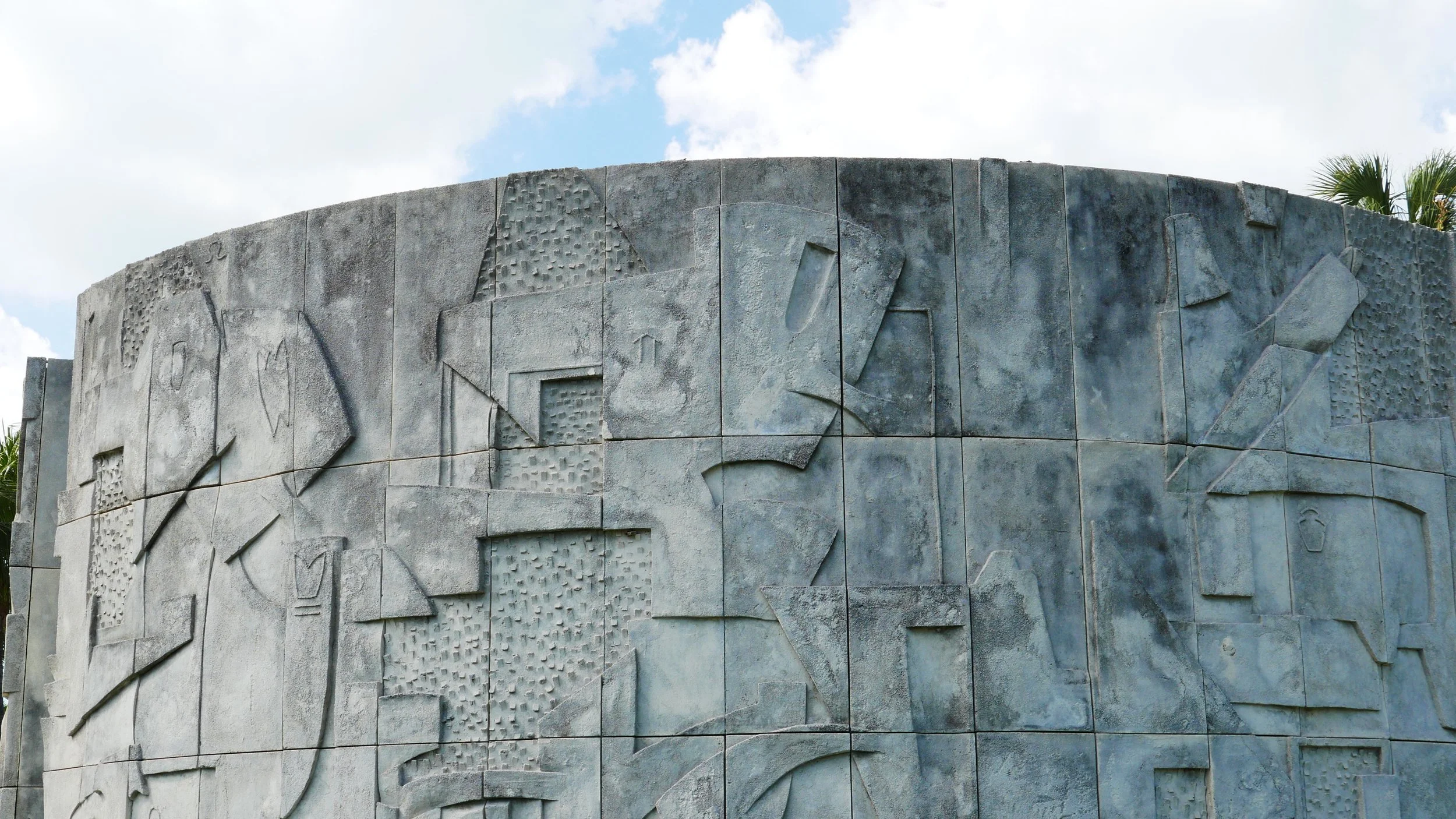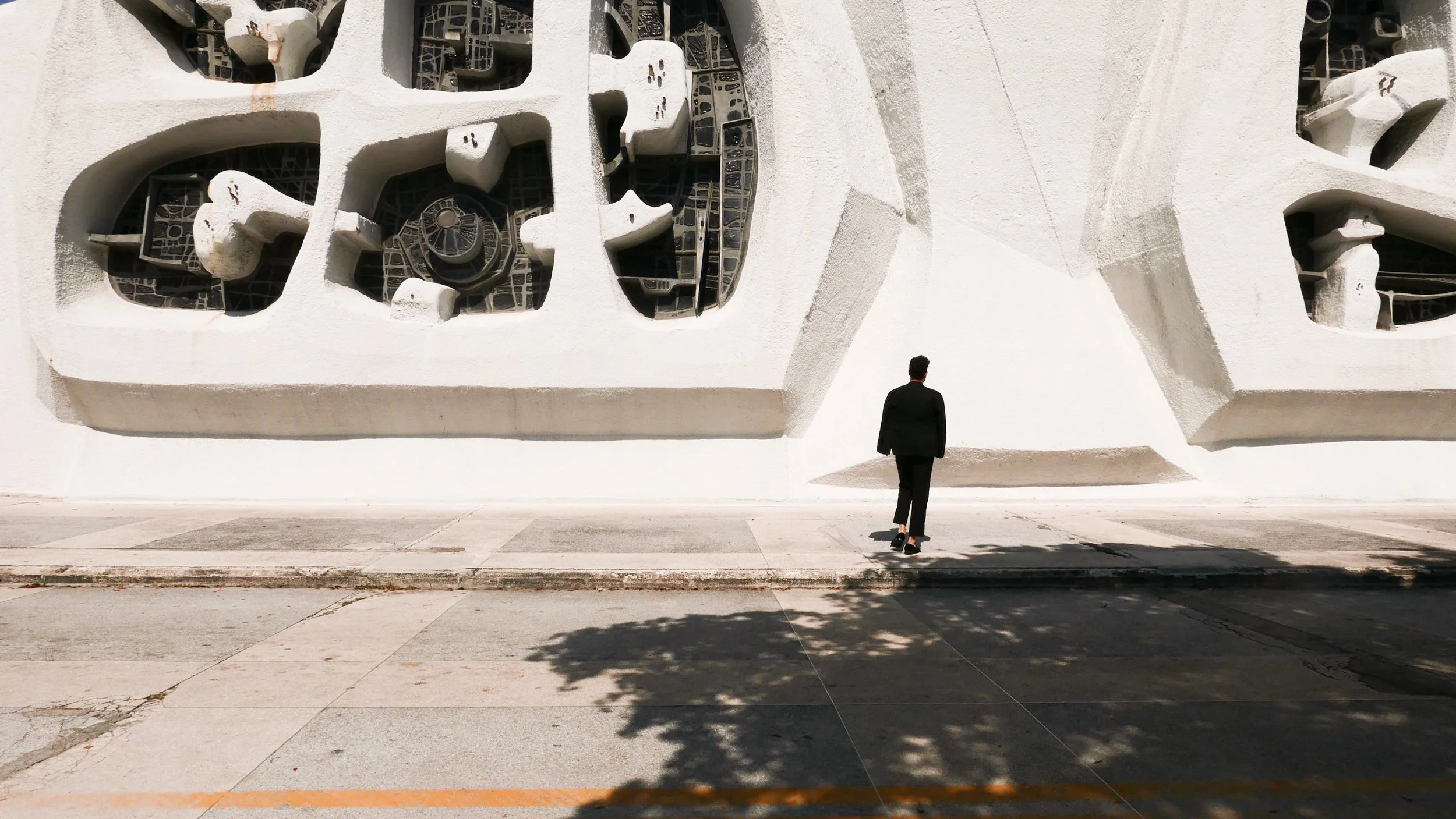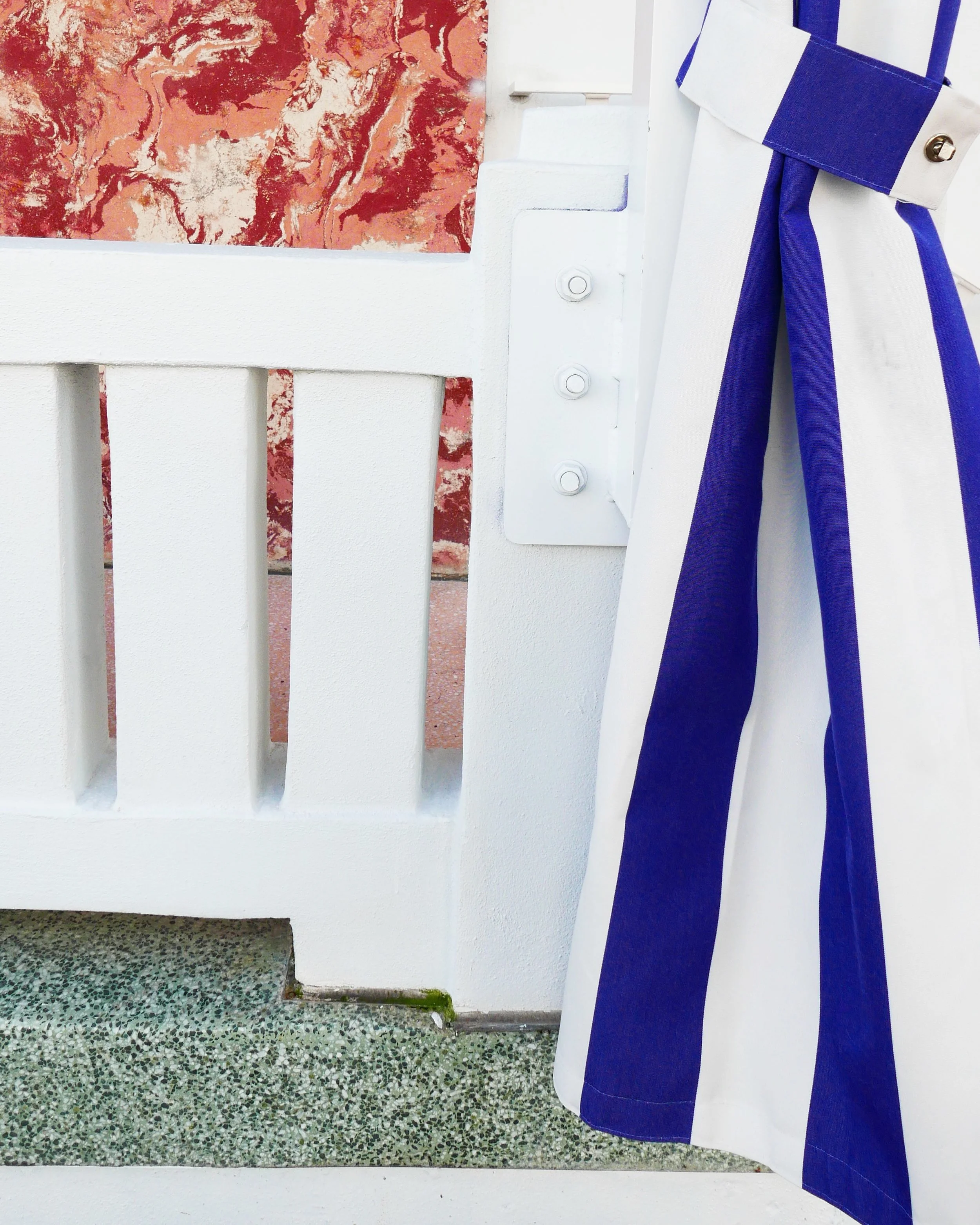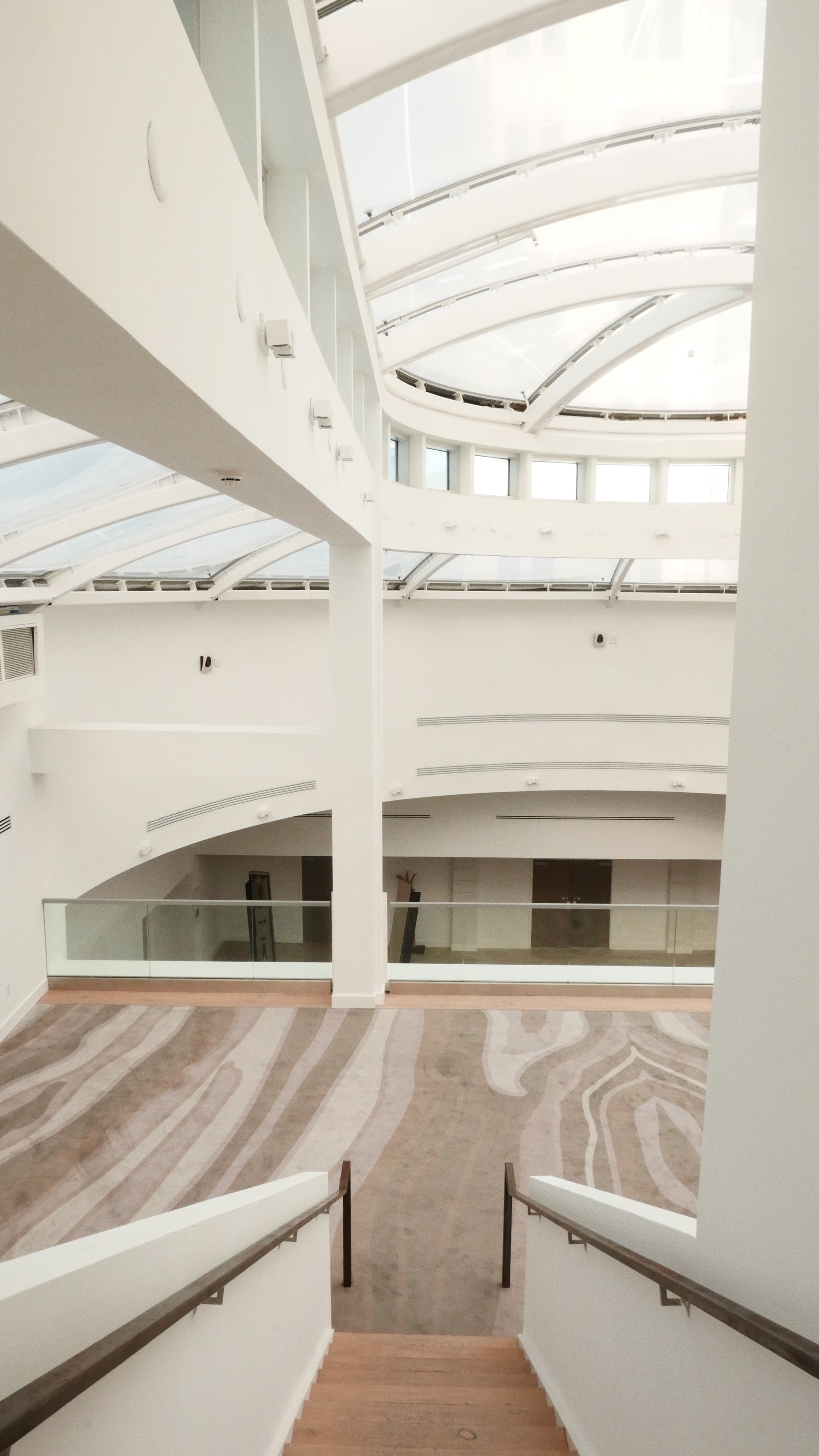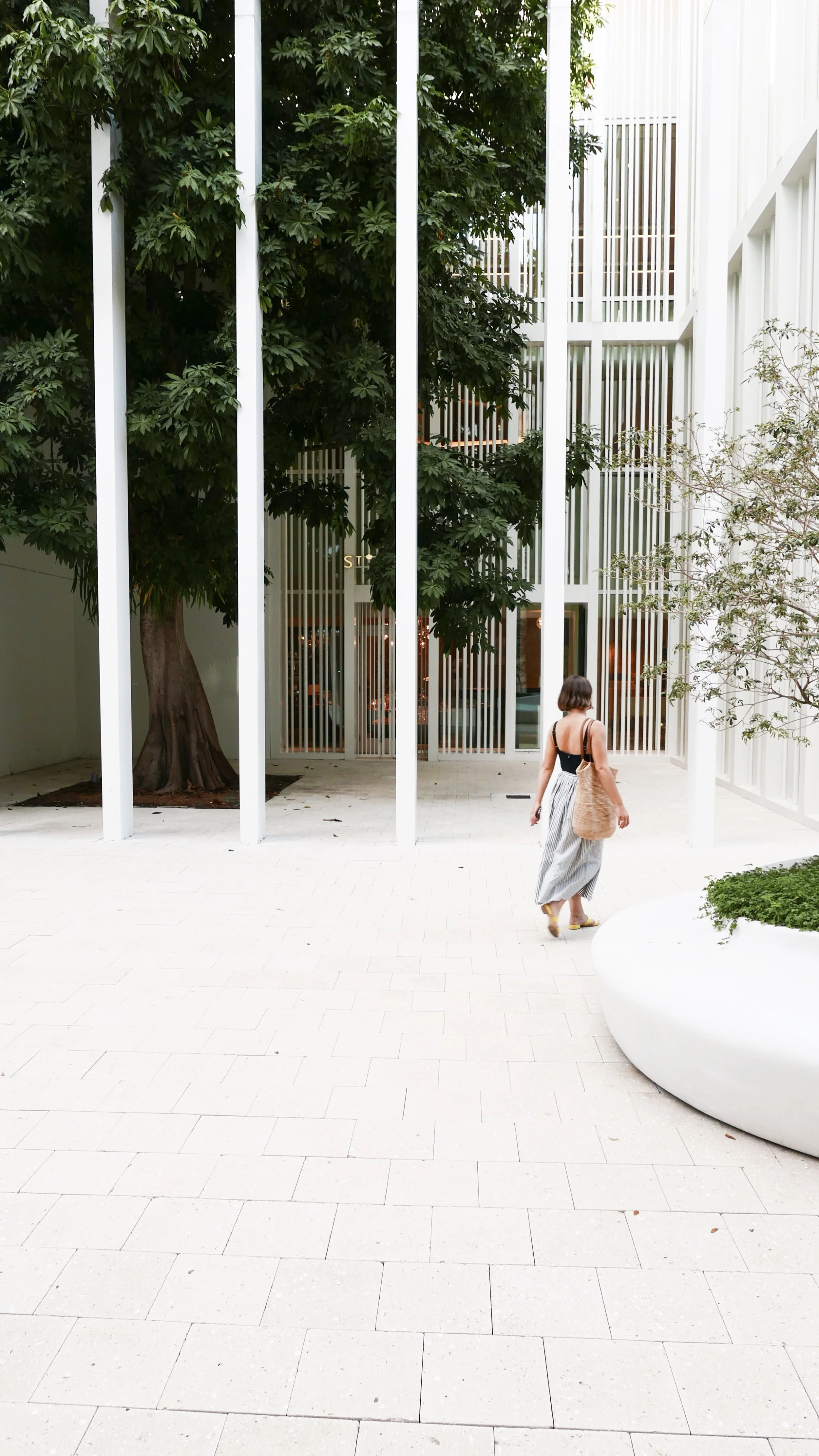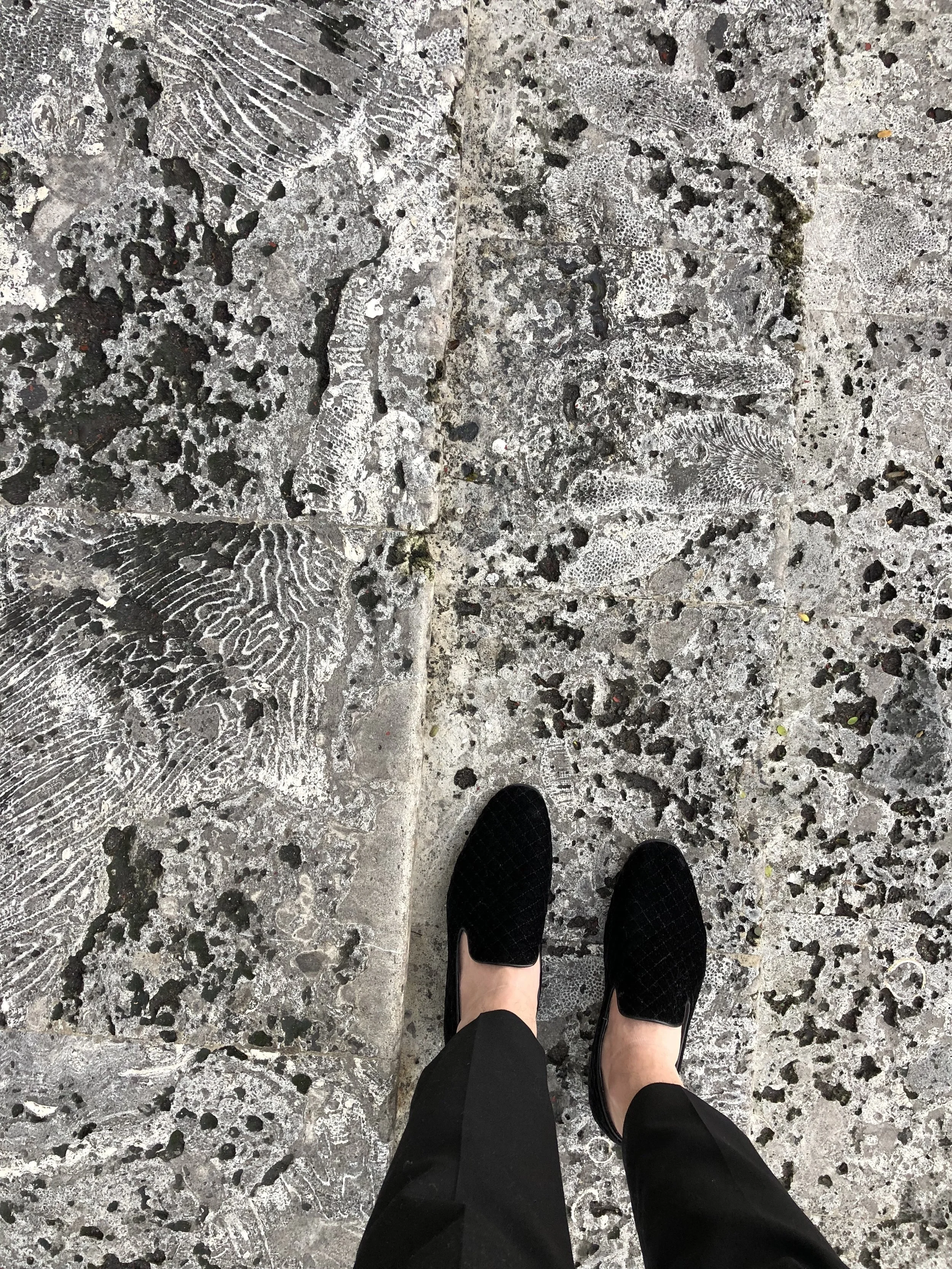Miami: Plaster and Form
The cast-sand rotunda at Collins Park in South Beach, Miami.
It’s no secret that Miami is full to the gills with art deco and WPA era work, so I won’t spend a lot of time talking about it. I do want to touch on the importance of materiality in art deco designs, layering interest and texture over the forms that create the signature shapes of the movement. Above is the Rotunda at Collins Park, in South Beach. It was created in 1962, by artist Albert Vrana. Vrana designed this relief pattern based on the abstract geometric patterns and block-construction of South Beach, ultimately decided to build his structure out of cast-sand forms. The cast-sand allowed for a somewhat quick construction, behaving in a way similar to cast concrete. The texture is quite unique and eye-catching, looking similar to concrete but a little looser and deeper. The pieces were prefabricated and fit into place, creating this curved façade of relief in front of what used to be the Miami Beach Library.
The Shorecrest Hotel was built in the 1930s and was briefly used as army barracks in the second world war. The white and tinted yellow plaster construction helps keep all attention on the form of the building.
Plaster, the unsung hero
Walking down the main drag of South Beach, you’re confronted by dozens of art deco hotels and structures. The structures are vastly different in scale, use, and footprint, but they’re mostly joined by one element. With some pastel exceptions, the buildings are almost exclusively covered in white plaster. In my opinion, this does a great service to the formal qualities of the buildings. Art deco is predicated on a careful balance of proportion, showing off scale and mass but keeping it attractive and interesting. Instead of big white boring boxes, architects got to act as sculptors and show off their mastery of space. Concentric lines, angled balconies, smart pops of color; all function to create interest and a unique type of building.
Kenneth Treister’s Temple Israel of Greater Miami is a god damn masterpiece of form and plasterwork. There were no technical drawings for this sculptural façade. It was just kind of eye-balled.
This is further amped up by the use of white plaster, which doesn’t call any attention to itself. It has a grit and quality more interesting than drywall or vinyl paneling, but it’s not the star of the show. In modernist buildings that usually feature floor-to-ceiling glass curtain walls, the emphasis is fully on function and not on form. They act as glass boxes that house activity and try not to call attention to themselves. In these art deco executions of architecture, the building itself is the star of the show.
In my opinion, there’s no better example in the Miami area than Kenneth Treister’s 1962 Temple Israel of Greater Miami. The building was created by a sculptor and uses white plaster forms to create a really stunning façade. Construction was done based on his sketches with no measurements or technical specifications, making it truly a site-specific artwork. The façade is a sculptural interpretation of the Ten Commandments, and the thing concrete and plaster walls use their geometry to create structural rigidity and strength. As imposing and monumental as the exterior of the space is, the interior is (apparently) rich with wood, dark metals, and colored lighting, making it an intimate place of worship.
Marbleized plaster, green terrazzo, and broad blue and white stripes beg you to interact with the Gale Hotel.
Broken tile, tinted plaster, and interesting forms made this ice cream stall a fun intervention at Miami Beach.
Granite stairs and mismatched sidewalk paint.
Please look at me
Many places, if they aren’t white plaster, are really calling out for notice. This is where material use gets really interesting.
Terrazzo and brightly-colored tile beg for attention and interaction. They’re joined by granite, mismatched paint on concrete, stone inlayed with coral fossils, and marbleized plaster (which I never knew was a thing.) All of these items are lined up in a parade of striking noise, almost like a fever dream but something that you want to enjoy. Among mangroves and naturally-colored sand stands a fluorescent blue ice cream stand with broken tile mosaic countertops. A hotel’s balcony is the tightest green terrazzo you’ve ever seen, and it looks like a natural, mossy contrast to the pink marble behind it, which turns out to be decorative plaster.
These uses of color and materiality may seem show-offish and frivolous, but I feel that they are a really beautiful example of the intersectionality of form and function. I believe it is a myth that form and beauty cannot be functional and that decoration adds nothing but expense to a project. Just like flowers smell rich and sit beautifully, in nature both of these traits function to attract bees which help in their reproductive cycle. In the same way, these little beach-side stands and huge hotels show off what they have, try to be unique, and leverage their beauty to get attention.
The Bass Museum, made from a local sedimentary stone containing fossils.
1 Miami, a new construction complex that works very hard to fit into the vernacular.
Contemporary applications
There are a lot of buildings in Miami Beach and the surrounding area that look plain generic. Big glass boxes with no originality that resemble structures in Cleveland and New York and London, and have no sense of originality of vernacular. On the other hand, there are several buildings in the area that used smart material use and good design to create spaces that feel like they could only exist in Miami, or that they’ve been there for much longer than they actually have.
One example of this would be 1 Miami, a hotel and event space that uses interesting and diverse materials like local woods and stones, mixed with commercial products like the above carpeting, to create a building that feels luxurious and contemporary while fitting neatly into the themes that make Miami’s architecture great. White lacquered wood paneling and stone floors make the space feel very south Florida, all the while feeling cosmopolitan and comfortable for people visiting from all over the world.
Stephanie enjoying this bright, airy, space.
Another great example of this use would be the Hermés store in Miami’s new Design District. White building materials, relief sculpture, integration of plants and trees into the designs, and a billion other elements help strike that really beautiful balance between contemporary and vernacular-inspired. The work is inviting, clean, airy, and feels equally like it could’ve been part of the 1920s development of Miami or like it belongs in the future.
Side note: everything in this shopping center is unattainable to the average person, and 1 Miami hotel suites average around $1,000/night. So, this has me thinking that there is definitely a reason people avoid good design and vernacular materials, and that’s because it’s perceived as expensive and out of touch. I think that this is often the case, but I also believe that it’s possible to bring this sort of design to and depth into everyday architecture for everyday people. I believe that there should be more emphasis on smart materials use and making projects unique in the everyday practice of architecture and design. I am going to explore this topic a lot more.
I also believe that if I ever build myself a house in the future I want all of the floors to be brain coral fossil sandstone.
Brain corral fossil steps at the Freehand Hotel.
